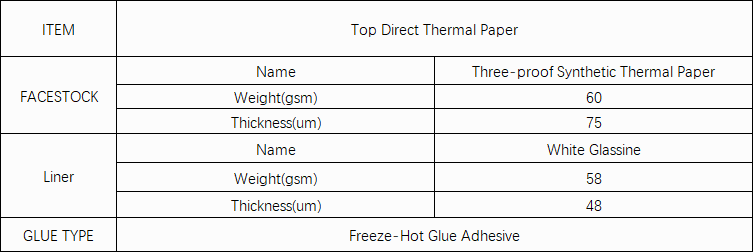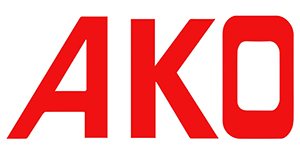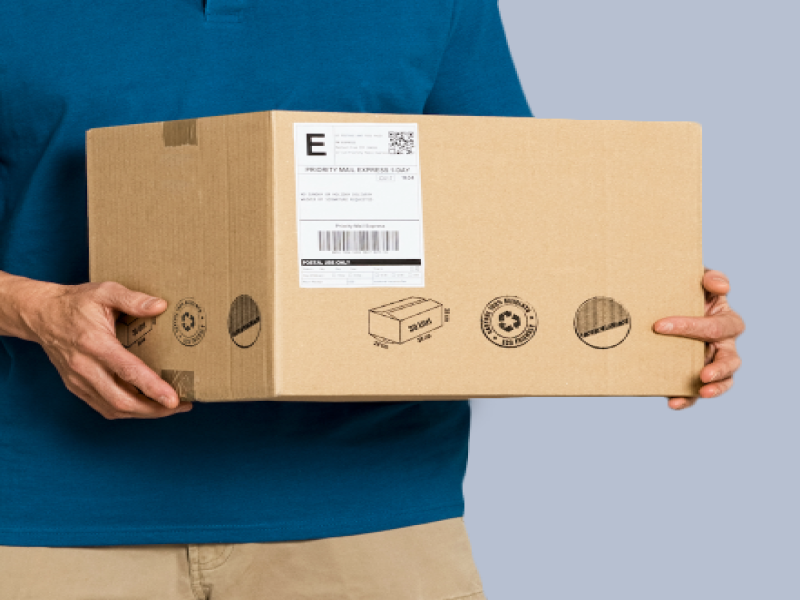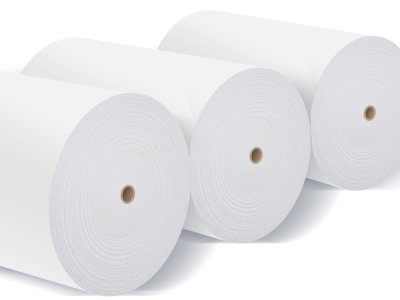Get Support
123-456-789-10

AKO Self Adhesive Direct Thermal Paper mainly for three heat-sensitive paper (waterproof, oil-proof, anti-friction). For logistics labels, the anti-scratch effect of the three-proof paper is better, and the color preservation cycle is long; Single heat-proof paper: the main surface on the waterproof, color preservation time is slightly short.
Advantages:
Simplicity: Direct thermal printing is a straightforward process, as it doesn't require ribbons, ink, or toner. This simplifies the printing process and reduces operational costs.
Cost-Effective: Since there are no consumables like ink or ribbons, direct thermal labels are cost-effective for high-volume printing applications.
High-Speed Printing: Direct thermal printers can produce labels at high speeds, making them ideal for applications that require rapid label production.
Low Maintenance: These printers have fewer moving parts compared to other printing technologies, leading to reduced maintenance requirements and increased uptime.
Durable Labels: Direct thermal labels are durable and resistant to fading over time, making them suitable for short-term labeling needs.
Environmentally Friendly: As they don't require ink or toner cartridges, direct thermal labels are considered more environmentally friendly and produce less waste.
Applications:
Shipping Labels: Direct thermal labels are commonly used for printing shipping labels, including shipping addresses, barcodes, and tracking information.
Retail Labels: They find extensive use in the retail industry for pricing labels, shelf tags, and product identification labels.
Receipts and Tickets: Direct thermal labels are used in point-of-sale systems to print receipts, tickets, and coupons.
Food Labels: In the food industry, direct thermal labels are used for printing labels on perishable items such as deli products, baked goods, and seafood.
Inventory Management: Direct thermal labels are crucial for inventory management and asset tracking, where barcode labels are used to track products, equipment, and assets.
Healthcare Labels: They are used in healthcare settings for printing patient wristbands, specimen labels, and pharmacy labels.
Manufacturing Labels: Direct thermal labels are used in manufacturing for labeling products, parts, and inventory.
Postal Services: Postal and courier services use direct thermal labels for printing shipping labels and tracking information.
Event Tickets: Direct thermal labels are used for printing event tickets, parking permits, and access badges at events and venues.
Library Labels: Libraries use direct thermal labels for cataloging and tracking books, DVDs, and other materials.
In summary, direct thermal labels are favored for applications that require cost-effective, high-speed, and low-maintenance label printing. They are commonly used in industries such as logistics, retail, healthcare, and manufacturing, where simplicity and efficiency are key.





